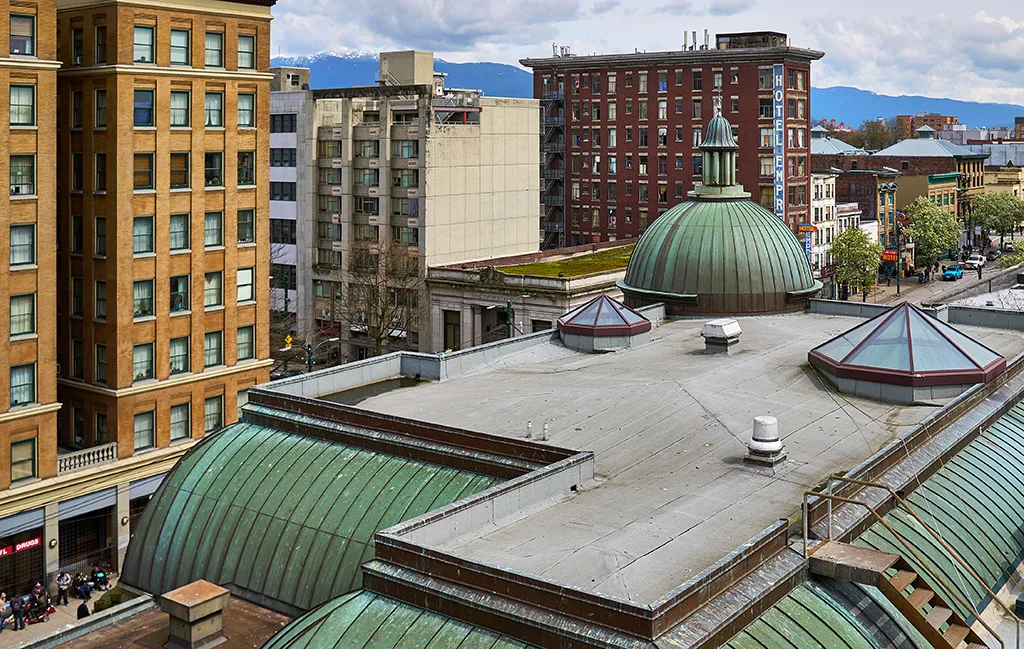The transformative First United redevelopment project at 320 East Hastings Street is nearing completion, promising to address urgent housing needs and offer revitalized community resources in one of Vancouver’s most vulnerable neighbourhoods. Combining affordable housing, Indigenous cultural spaces, and expanded social services, this $91 million initiative is poised to make a lasting impact on the Downtown Eastside.
Affordable Housing That Speaks to Reconciliation
Central to the First United project’s vision are 103 new below-market housing units dedicated to Indigenous people, a demographic disproportionately affected by the housing crisis. Operated by the Lu’ma Native Housing Society, these homes are more than a response to homelessness—they are an affirmation of community, culture, and dignity. The housing portion of the building includes 35 supportive units for those with complex needs and an additional 68 rental homes, creating a crucial refuge for urban Indigenous residents struggling to find stable housing in the Downtown Eastside.
“This project is an important effort towards reconciliation,” says Dave Baspaly, president of Lu’ma Native Housing Society. With a track record of managing more than 1,700 affordable units across British Columbia, Lu’ma’s stewardship will ensure these homes meet the needs of a community often sidelined in discussions about urban development. The housing will occupy the top seven floors of the building, while the first four floors will be dedicated to the expanded programs and services offered by First United.
Notably, the integration of Indigenous art and culture throughout the building amplifies its mission of reconciliation. From brickwork patterns inspired by traditional Salish weaving to carved house posts by Indigenous artists, every project element reflects respect for the Host Nations of the Musqueam, Squamish, and Tsleil-Waututh peoples. These features ensure that the building is not just a shelter but a cultural landmark.
A Community Hub for Social Support and Healing
The new First United facility will triple the organization’s available program space, providing approximately 40,000 square feet for expanded services and purpose-built amenities. Designed to meet universal accessibility standards, the facility is a lifeline for those navigating homelessness, addiction, and systemic poverty in the Downtown Eastside.
Key offerings include washroom and shower facilities, women’s day sleeping areas for those who feel unsafe on the streets at night, and a computer lab to bridge the digital divide. The facility will also serve as a warming, cooling, and wildfire smoke refuge, addressing the growing impact of climate change on vulnerable populations. “This new housing facility is much needed, innovative, and can’t come soon enough,” says Sarah Blyth, executive director of Vancouver’s Overdose Prevention Society.
The rooftop will feature an outdoor gathering space where Indigenous ceremonies and community events can take place, fostering a sense of belonging and healing. Additionally, the facility includes private multipurpose spaces designed for collaborative programs and partnerships with other service providers, enhancing the reach and impact of First United’s flagship services.
A Vision for Resilience and Inclusion
The design and architecture of the new First United facility embody its core values of dignity, resilience, and inclusivity. The building’s exterior will prominently feature art by Indigenous creators, including a brickwork pattern designed by Musqueam Master Weaver Debra Sparrow and panels with commissioned art by Musqueam Visual Artist Mack Paul. Inside, the facility will display works by urban Indigenous and Downtown Eastside artists, ensuring that the stories and voices of the local community are represented.
Art installations and cultural elements extend throughout the building, from carved totem poles in stairwells to a sacred space with two-storey windows on the third and fourth floors. These details ensure the building reflects the needs, heritage, and spirit of the community it serves.
The redevelopment’s financial structure reflects a collaborative effort. While First United has raised $31 million of its $37 million share through donations and contributions, Lu’ma Native Housing Society is funding its portion—approximately $54 million—through government financing and a mortgage. This partnership underscores the necessity of combining community-driven initiatives with institutional support to tackle entrenched challenges like housing and homelessness.
A New Chapter for the Downtown Eastside
With completion expected in a year, the First United redevelopment represents more than a construction project—it is a testament to what can be achieved when community, culture, and social responsibility converge. As the Downtown Eastside continues to grapple with overlapping crises of homelessness, addiction, and inequality, this initiative offers a blueprint for resilience and transformation.
The 320 East Hastings project is poised to become a vital pillar of support for one of Vancouver’s most marginalized neighbourhoods. By combining affordable housing with expanded social services and cultural integration, it serves as a powerful reminder that solutions rooted in community and reconciliation can pave the way for a brighter, more equitable future.
Lance has lived in the Downtown Eastside for years, staying closely connected to the neighbourhood and the people who call it home. He writes about the issues that matter—from housing and policy shifts to the everyday stories that shape the community—because DTES isn’t just where he lives, it’s a place he cares deeply about.






Leave a Comment